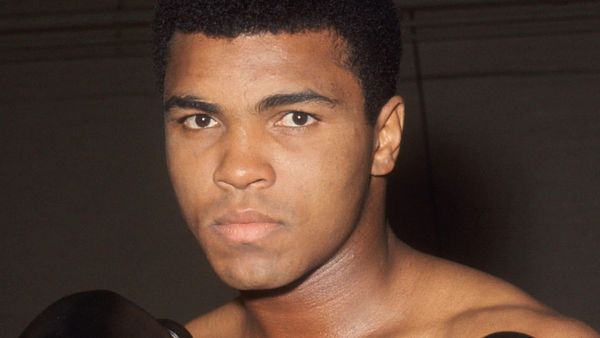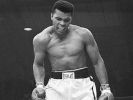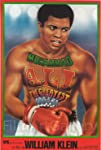Eye For Film >> Movies >> Muhammad Ali, The Greatest (1974) Film Review
Muhammad Ali, The Greatest
Reviewed by: Anne-Katrin Titze

With the Main Slate of the 58th New York Film Festival offering so many great choices to view (Victor Kossakovsky’s Gunda, Cristi Puiu’s Malmkrog, Chaitanya Tamhane’s The Disciple, Michael Dweck and Gregory Kershaw’s The Truffle Hunters, Steve McQueen’s Mangrove and Lovers Rock among them), it is easy to overlook the gems featured in other strands.
Screening with Terence Dixon’s Meeting The Man: James Baldwin In Paris (1971) in the Revivals programme, is the newly restored Muhammad Ali, the Greatest (1974). William Klein’s incomparable documentary is much more than a boxing film chronicling the fights of Sonny Liston vs Cassius Clay, Muhammad Ali vs Sonny Liston, and George Foreman vs Muhammad Ali.

Klein, famous for his depiction of the fashion world in his satire Who Are You, Polly Maggoo?, a milieu he knew well as a photographer for Vogue, here portrays the famous and infamous boxer and the world circling around him for over a decade. Starting with his fights in the US against Liston in 1964 and their rematch in 1965, Muhammad Ali, the Greatest completes the picture with his return to boxing to go up against World Heavyweight Champion Foreman in Kinshasa, Zaire, hosted by President Mobutu in 1974.
What Klein captures on camera in regards to race relations is powerful, exposing shameless bigotry and frightfully timely attitudes. One of the white businessmen at the start introduces himself with the words “I’m the owner of Cassius Clay.” Another one calls him an “ungrateful boy”, before continuing that his mother’s name was Clay and that he suspects that his own ancestors were probably the owners of Clay’s, “before we freed the slaves in our family.” These chilling scenes set the tone, before we see Clay pose and joke with The Beatles in a boxing ring, playing it up for the cameras, lifting up Ringo, and calling himself “The Greatest.”
The filmmaker collects comments and snapshots from the press, from the trainers, from the old white lady with the curlers in her hair shopping at a supermarket, from little Black boys in the playground shouting Ali’s slogan, that they too will “float like a butterfly, sting like a bee”. During a press conference after the first fight, “suave and calm”, the newly crowned World Champion changed his tune, no need for clowning and PR stunts anymore. “I don’t have to be what you want me to be” he says to the media.
Muhammad Ali, the Greatest astutely takes us from his name change, to a speech by Malcolm X, the fight in rural Lewiston, Maine after Malcolm X’s assassination, to his being a conscientious objector to the war in Vietnam when he was drafted and the high price he paid for it, to the final chapter in Zaire in 1974.
President Mobutu hosts the fight for the title on the “soil of their ancestors” as Ali tries to regain his World Heavyweight title by defeating George Foreman. Now shot in color, Klein again immerses himself in the preparations, the atmosphere (with a snake and dances and drums), and the varying states of mind surrounding the sporting event to paint a much larger picture. This is not a film about boxing, it is ultimately a film about race in America.
Reviewed on: 27 Sep 2020














